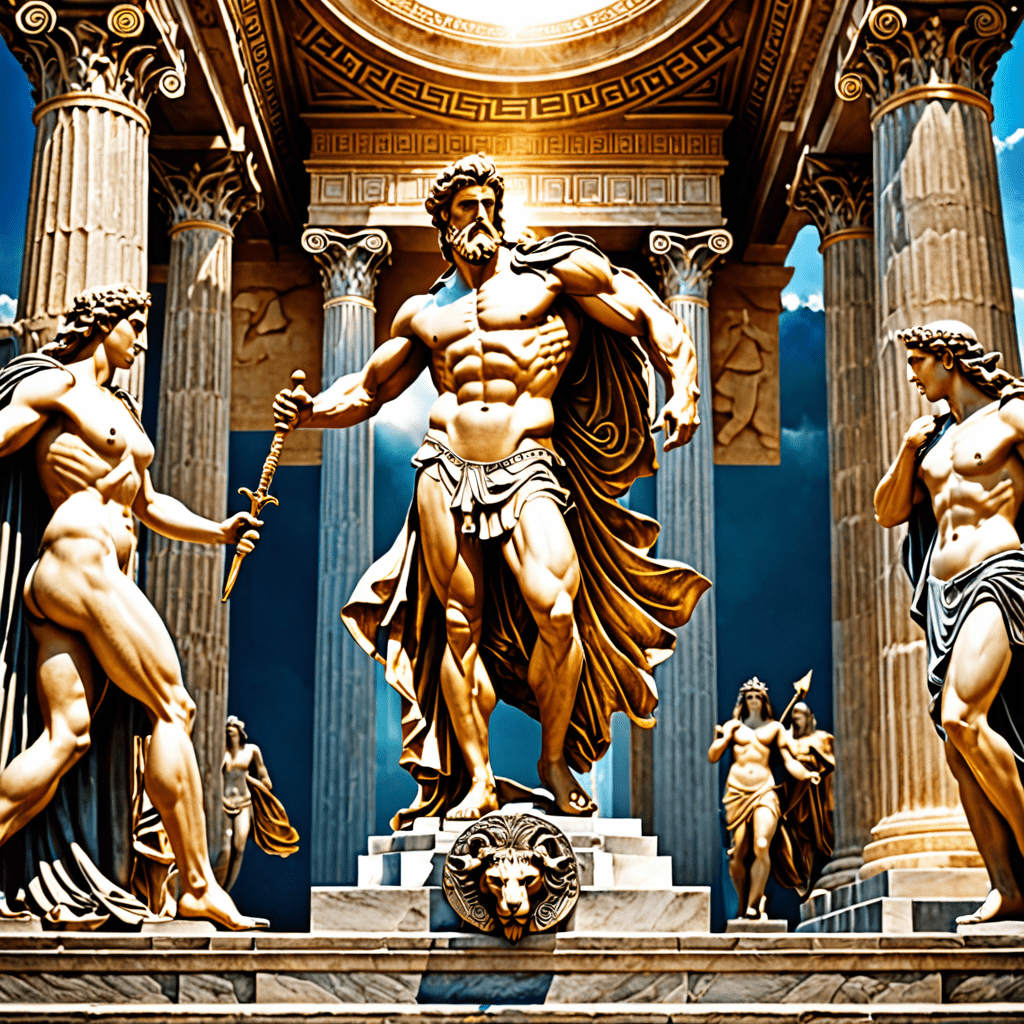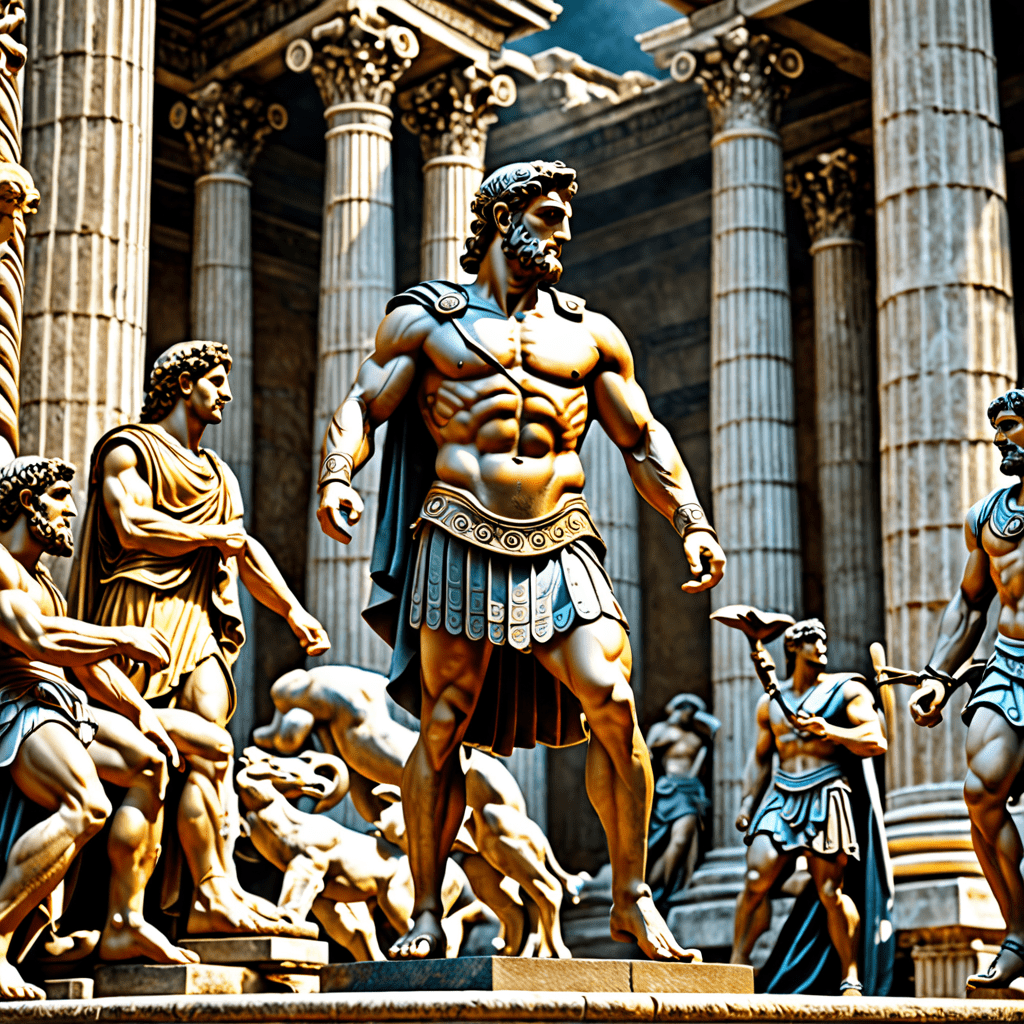From Creation to Catastrophe: The Epic Tales of Ancient Deities
I. Introduction to Ancient Deities
Throughout history, ancient deities have played a pivotal role in the cultural and spiritual lives of civilizations. These powerful beings were often seen as embodiments of natural forces and human experiences, providing explanations for life’s mysteries and the workings of the universe.
Mythology served as a crucial framework for understanding the world, allowing ancient peoples to articulate their beliefs about creation, existence, morality, and the cosmos. Myths were not merely stories; they were the foundation upon which cultures built their understanding of reality.
II. The Birth of the Cosmos: Creation Myths Across Cultures
Creation myths vary widely across different civilizations, each offering a unique perspective on how the universe and humanity came into being. Here, we explore some of the most significant creation narratives:
A. Comparative analysis of creation myths from different civilizations
- Mesopotamian Creation: Enuma Elish
The Enuma Elish, one of the oldest known creation myths, tells the story of Marduk, who defeats the goddess Tiamat to create the world from her remains. This narrative underscores themes of chaos and order, as well as the supremacy of Marduk, who becomes the chief deity of Babylon.
- Greek Creation: Hesiod’s Theogony
In Hesiod’s Theogony, the universe begins with Chaos, followed by Gaia (Earth), Tartarus (the Abyss), and Eros (Love). The subsequent birth of the Titans, and later the Olympian gods, shapes the Greek understanding of divine hierarchy and the nature of existence.
- Hindu Creation: Rigveda’s Nasadiya Sukta
The Nasadiya Sukta from the Rigveda explores the enigmatic origins of the universe, suggesting that creation arose from a state of non-being. This philosophical approach highlights the mystery surrounding existence and the divine.
B. Themes and motifs in creation stories
Across these narratives, common themes emerge, including:
- The battle between chaos and order
- The birth of deities and their roles in creation
- The cyclical nature of life and death
III. The Pantheon of Power: Major Deities and Their Domains
Ancient pantheons were filled with gods and goddesses, each governing specific aspects of life and nature.
A. Overview of prominent ancient deities and their attributes
- Egyptian Gods: Ra, Osiris, and Isis
Ra, the sun god, symbolizes creation and life. Osiris represents the afterlife and resurrection, while Isis embodies motherhood and magic, showcasing the complex interrelations among Egyptian deities.
- Norse Gods: Odin, Thor, and Freyja
Odin, the All-Father, is associated with wisdom and war. Thor, the god of thunder, is a protector of mankind, while Freyja represents love and fertility, illustrating the multifaceted nature of Norse mythology.
- Roman Gods: Jupiter, Mars, and Venus
Jupiter, the king of the gods, symbolizes authority; Mars represents war, and Venus embodies love and beauty, reflecting the Romans’ adaptation of Greek deities to fit their culture.
B. The interplay between deities and human affairs
Ancient cultures believed that the actions of deities directly influenced human lives, leading to rituals, sacrifices, and offerings aimed at appeasing the gods and seeking favor.
IV. The Age of Heroes: Deities and Their Mortal Champions
The relationship between gods and heroes is a recurring theme in mythology, often illustrating the trials and tribulations of humanity.
A. The relationship between gods and heroes in mythology
- Greek Heroes: Hercules and Perseus
Hercules, known for his strength and his Twelve Labors, embodies the struggle against impossible odds, often with divine assistance. Perseus, with the help of Athena and Hermes, slays Medusa, showcasing the partnership between mortals and gods.
- Mesopotamian Heroes: Gilgamesh
Gilgamesh, a demigod king, embarks on a quest for immortality, highlighting themes of friendship, the human condition, and the search for meaning, influenced by divine encounters.
B. Lessons learned through the trials of heroes
These narratives often impart moral lessons, emphasizing virtues such as courage, humility, and the acceptance of human limitations.
V. The Fall from Grace: Deities in Conflict
Divine conflicts often mirror human struggles, showcasing themes of rivalry, power, and the consequences of discord.
A. Epic tales of rivalries and conflicts among gods
- The Titanomachy in Greek mythology
This epic battle between the Titans and the Olympians led by Zeus illustrates the transition of power and the establishment of a new order in the cosmos.
- The battle between the Asuras and Devas in Hindu lore
This ongoing conflict represents the struggle between good and evil, order and chaos, with each side embodying different aspects of existence.
B. Consequences of divine conflict on the mortal realm
The struggles among deities often resulted in significant changes in the mortal world, leading to natural disasters, wars, and shifts in human destiny.
VI. The Catastrophic Wrath: Divine Retribution and Natural Disasters
Many ancient myths explain natural disasters as manifestations of divine anger or retribution.
A. Myths explaining natural disasters as acts of divine retribution
- The Great Flood: Noah’s Ark and Gilgamesh
Both the biblical account of Noah and the Epic of Gilgamesh recount a great flood sent by the gods to cleanse the earth of humanity’s sins, emphasizing the theme of divine judgment.
- Volcanoes and storms: The wrath of Pele and Thor
Pele, the Hawaiian goddess of volcanoes, and Thor, the Norse god of thunder, both represent the destructive forces of nature, illustrating the connection between divine will and natural phenomena.
B. Cultural interpretations of calamity and suffering
These myths often served to explain suffering, providing a framework through which ancient peoples could understand their experiences and seek solace in the idea of divine purpose.
VII. The Legacy of Ancient Deities: Influence on Modern Culture
The stories of ancient deities continue to resonate in contemporary culture, influencing literature, art, and modern spirituality.
A. How ancient myths shape contemporary literature, art, and media
From novels to films, the archetypes and themes found in ancient mythology are prevalent in modern storytelling, reflecting enduring human concerns.
B. The resurgence of interest in ancient mythology in modern spirituality
Many contemporary spiritual movements draw inspiration from ancient myths, seeking to reconnect with the wisdom and insights embedded in these timeless tales.
VIII. The Evolution of Deity Worship: From Polytheism to Monotheism
The transition from polytheism, the worship of many deities, to monotheism, the belief in a single god, marks a significant shift in religious thought. This evolution reflects changing human understandings of the divine, morality, and the nature of existence.
In summation, the epic tales of ancient deities not only provide insight into the cultures that created them but also continue to influence and inspire humanity today. Through their stories, we explore fundamental questions about our existence, the nature of power, and the human experience.




